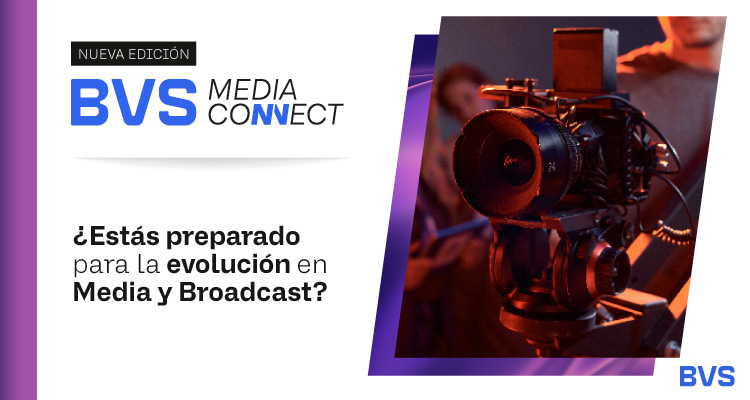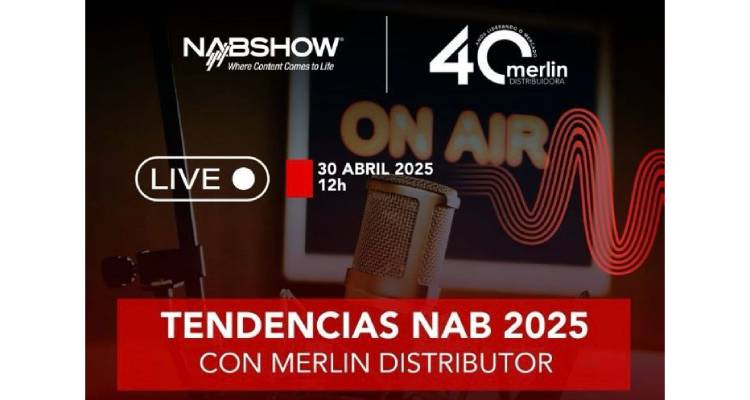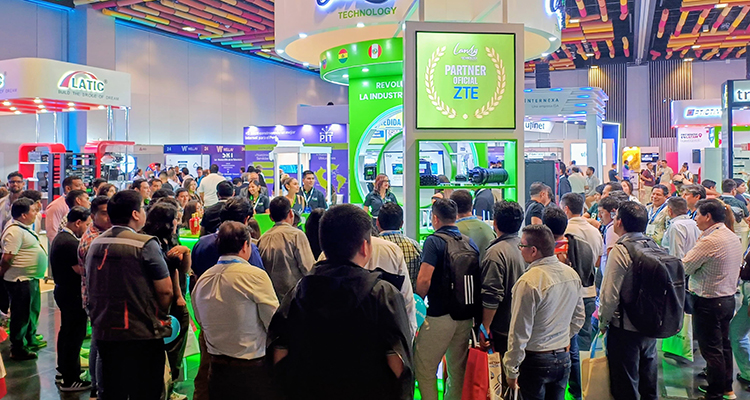By Bert Offers, Senior Sales Director at Interra Systems

According to a recent survey, visibility into quality of experience (QoE) issues is a top concern for companies engaging in video streaming. This, coupled with a rise in streaming video consumption in regions such as LATAM and globally, there is a need for both to grow in parallel. In a report by Market Data Forecast, looking into the Latin America Media streaming market, it was found that market revenue in the region is expected to grow to $851 million by 2025. Spearheading this growth in the LATAM region are Argentina, Brazil, Colombia, and Mexico – with some reports saying that Brazil and Mexico are respectively number 4 and 5 on the global list.

Given how competitive the streaming landscape is, service providers are looking for ways to differentiate their offerings – in terms of both content variety and content quality. Preparing and delivering OTT video is considerably more complex than broadcasting linear TV via cable or satellite. Content catalogs are expanding at a phenomenal pace, and video is being streamed to a much larger and more diverse audience, driving the need for more efficient content preparation and delivery methods, more sophisticated QC and monitoring systems, more accurate captioning and subtitling tools, and better ad revenue models.
Streaming quality has a direct impact on the credibility and image of a company offering streaming services. Consumers today expect high video quality and a flawless viewing experience, and if the QoE is sub-par video service providers run the risk of losing customers.
Here are five important considerations for delivering outstanding quality streaming services:
1. Providing World-Class Audio and Video Quality
Picture and audio quality are the two most important components that define QoE. Having a comprehensive, file-based quality control (QC) solution that supports all VOD content, providing checks for video and audio formats, baseband quality, compression artifacts, metadata, and more, is a must. The majority of quality-related issues occur due to errors in source files, or during transcoding and packaging. Also, in the case of streaming, content is exposed to a much broader audience around the world, with each country having its own broadcasting rules and regulations. QC processing needs to be enhanced to include content categorization (e.g., profanity, adult content, facial recognition, sporting event highlights) and compliance. Considering the volume of video assets that service providers are now handling, it is impractical to perform these operations manually. A QC system that includes classification and compliance features, alongside in-depth audio-video quality checks, can go a long way in assuring better quality media.

Aside from leveraging a file-based QC system, placing monitoring probes at key video processing points – such as the post packager, origin server, and CDN – can provide critical insights into the quality of service that is being delivered. Probes can be used to perform content quality and delivery-specific checks such as: manifest validation, URL availability, HTTP download errors, video discontinuity, audio levels, video artifacts, and quality issues caused by over-compression and other problems. Active monitoring has two main benefits: alerts for QoE-impacting errors, and any deviation that occurs compared with the metrics and thresholds.
Device-level monitoring provides critical information such as download delays, bit rate, audience engagement statistics, and more. However, it is inadequate for identifying the cause and location of these issues. Due to the complexity involved in the creation and delivery of streaming video, quality monitoring at strategic points helps OTT service providers identify the nature of the problem, and where it occurs in the delivery chain, while also providing troubleshooting tools, whether the issues are audio, video, closed captions, or ad-delivery related. Only by monitoring 24/7 can the quality gaps be identified, errors minimized, and a better QoE be offered for viewers.
2. Defining Metrics and Tracking Them on a Continuous Basis

Unlike traditional broadcast delivery, where viewers receive the same video copy and have similar viewing experiences across the board, streaming delivery parameters are uneven. This means viewing experiences can be difficult to predict. Streamed video, bit rate, captions, subtitling language, ads, and more, depend on the user’s internet connectivity speed and individual selections, all of which, should be considered when creating KPIs and metrics.
Apart from the device-level viewing statistics, such as download delays and error rates, quality parameters with regards to the actual video are required. Macroblocking errors, audio levels, and video bit rate, are critical components for determining quality of service and QoE.
You may need to have specific QoE metrics for different regions or offerings. Applying the same quality metric for all content, across all geographies, is unrealistic and impractical. Internet connectivity speeds and the type of content (i.e., 4K, movies, live sports, premium vs. free) should be considered when determining which QoE metric is the most appropriate. For a streaming video service provider, a continuous tuning of quality metrics, and monitoring actual performance, is vital for providing an improved QoE.
3. A “Single Pane of Glass View” for Quality Monitoring and Root-cause Analysis
As part of quality assurance, it is critical to have a central dashboard that acts as a collection, aggregation, and visualization point for QoE data, in real time, across all key points in the workflow. As previously mentioned, when operating a video streaming service, often it is difficult to locate and troubleshoot a problem. You want to know where in the video processing and delivery chain it occurred and what the exact problem was.
A centralized monitoring dashboard for both linear and VOD content can gather the

status, as mentioned above, from different probes placed at post transcode, origin server, or CDN locations to provide visibility into every stream that’s being delivered. This is particularly useful as video preparation and distribution (i.e., CDN or edge distribution) are handled by separate entities in an organization. For premium live events, where much is at stake, the dashboard can expedite problem identification and correlation. For example, if video artifacts are seen on the user device, how do you determine where the problem originated and what caused it? Was it due to overcompression or signal interruptions on the client side? Many OTT providers are now streaming linear TV channels.
4. Providing High-Quality Captions and Subtitling
Delivering video content across different countries involves preparing content in a wide range of languages, creating audio dubs, and making captions. Maintaining multiple variations of the same content increases the risk of errors that can impact service quality. For large media companies that have a diverse audience, creating captions and subtitles is a huge task. Performing in-depth QC is a necessity to ensure a comprehensive and complete viewing experience.
Using a fully comprehensive, automated QC system, broadcasters can rapidly check the quality of video and audio formats, as well as the quality of closed captions and subtitles. As broadcasters expand their reach into new countries, AI/ML-based QC solutions will help them ensure that content complies with all industry and government regulations. Moreover, AI/ML-based QC solutions can help them address the various OTT and on-demand delivery ecosystem requirements.
5. Adopting the Cloud for Content Preparation and Delivery
Cloud computing has profoundly accelerated since the beginning of the COVID-19 pandemic. As organizations prioritize digitalization strategies, worldwide cloud infrastructure services spending grew 34% year-on-year in Q1 2022 to reach $55.9 billion, according to a report by Canalys. Even in a post-pandemic world, the work-from-home model and being able to access and manage software from anywhere will be a standard expectation. For engineering and operations groups, access to QC and monitoring systems from anywhere and any device greatly expedites problem resolution. And for large, 24/7 streaming operations, the cloud can offload resource-intensive tasks for infrastructure maintenance and provisioning. In many cases, cloud removes the need for large IT personnel and engineering resources on-premises.
Conclusion
As streaming video overtakes traditional TV viewing, media companies can no longer afford to use the status quo as far as QC and monitoring are concerned. Aggressive strategies for delivering great QoE are required to maintain and increase subscribers, and boost monetization. Video quality, and the quality of the viewing experience, are two key factors that are central in determining the success or failure of a streaming service today. In a crowded OTT environment, service providers must differentiate their offerings. There are a growing number of tools and products available to help them manage media, from content preparation to delivery, including AI-/ML-driven solutions. Investing in video quality analysis and monitoring tools that provide error alerts, troubleshooting tools, and other quality-related insights are no longer ‘just nice’ to have but are must-haves. Media companies should carefully choose the right strategies and tools to streamline processes for optimum video quality and viewer experience.
Author Bio:
Bert Offers, Senior Sales Director at Interra systems
Bert Offers is a Senior Sales Director at Interra systems. Over his career, Offers has worked in numerous roles with a range of service, content, and OTT providers across the world.
The scope of Offers’ expertise and industry experience extends to a variety of areas, including marketing, market development, product and brand management, and sales. Prior to joining Interra Systems, Offers worked in the video assurance domain for more than ten years, with companies such as Tektronix and Viavi (JDSU).
Offers holds a Bachelor of Science degree in Engineering.




